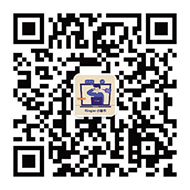
In an insightful conversation with Dr. Markus Heering, Managing Director of VDW, we explored what makes EMO the world’s most important international manufacturing event—and why this year’s show is especially relevant amid global challenges.
From artificial intelligence to automation, digitalisation, and sustainability, Dr. Heering detailed how EMO Hannover 2025 will serve as a beacon for industrial innovation, business matchmaking, and future talent development—at a time when the global manufacturing sector is navigating both disruption and opportunity.
Q: Why is EMO Hannover such an important event for the global manufacturing community?
Dr. Heering: EMO Hannover is unmatched in its international reach. No other event brings together such a diverse set of global exhibitors and visitors. This year, we expect exhibitors from over 40 countries—and visitors from more than 80. That level of internationality is truly unique.
It’s not just about the size or number of booths; it’s about the global perspectives. Attendees get to see solutions from all over the world, share ideas, and often form new business relationships on-site. Many exhibitors have told us that their first connections in entirely new markets started right at EMO.
It’s a place of inspiration. New business models, innovations, and even long-term partnerships are formed here—and that’s what gives EMO its power.
Q: What will be the main themes at EMO Hannover 2025?
Dr. Heering: We’ve identified three core themes this year: (1) Automation (2) Digitalisation—including AI (3) Sustainability.
Let’s start with automation. It’s essential today, not just for productivity, but because many countries—including Germany—face skilled labor shortages. In some regions, it’s about lack of qualification; in others, it’s generational preference—young people prefer digital tools over working on shop floors. Automation helps bridge that gap.
It also ties closely to digitalisation, which includes AI. We’ve talked about Industry 4.0 for over a decade. But now, we’re moving to the next level—with artificial intelligence offering smarter, more predictive, and highly efficient production solutions. Even SMEs (small and medium-sized enterprises) are seeing clear business cases for digital adoption.
Finally, sustainability is not optional anymore. It’s being driven by regulations, OEM requirements, and market expectations. EMO will showcase not just green machines but measurable methods—like carbon footprint tracking—to help companies meet these new demands.
Q: Beyond the exhibits, what kind of supporting programs can visitors look forward to?
Dr. Heering: Our young talent initiative remains a key pillar. Partnering with associations like the VDMA, we bring students and educators into direct contact with industrial tech. We want the next generation to see that manufacturing is not outdated—it’s creative, digital, and impactful.
There’s also a strong focus on upskilling and reskilling. Many industries need updated education systems to train the kind of workforce needed today. At EMO, we provide materials, demonstration booths, and live sessions to connect students, teachers, and companies.
Of course, our supporting programs also include forums, live tech talks, and sessions on topics like additive manufacturing, AI integration, and sustainable production.
Q: You’ve done a global EMO roadshow this year. What are the key takeaways from visiting so many countries ahead of the show?
Dr. Heering: We’ve visited markets from Portugal to China, Turkey to the U.S., and many others. One thing is clear: people want to be at EMO Hannover. After years of uncertainty and virtual-only interaction, there’s a strong need to connect physically—to exchange ideas, gain insights, and see real machines in action.
We learned that EMO isn’t just about showing products. It’s about creating dialogue. That’s why we adjusted our preview event format this year: we included open panel discussions with exhibitors and visitors. These conversations revealed that challenges like automation, digitalisation, and sustainability are universal—even if each country has its own specific context.
There’s a shared sense of passion and anticipation. Many companies are preparing enthusiastically for EMO—it’s clear they see this as a critical turning point.
Q: How does EMO Hannover help businesses navigate global uncertainties—economic or geopolitical?
Dr. Heering: Yes, we’re living in a time of uncertainty. The geopolitical climate, COVID recovery, supply chain fragility, and economic slowdowns have all impacted industry outlooks.
But uncertainty also drives people to seek direction. When companies are unsure of what technology to invest in next, or how to stay competitive, EMO becomes a lighthouse—a place to benchmark, learn, and decide.
And the signs are optimistic. Visitor interest in early 2025 events has been strong. The appetite for innovation—especially around AI—is growing fast. Companies want to understand what these technologies mean for their future. EMO provides that context.
Q: What is your personal wish for EMO Hannover 2025?
Dr. Heering: Above all, I want to see happy people—exhibitors, visitors, partners. That’s our mission at VDW: to offer a platform where the industry connects, learns, and does real business.
Even if we don’t see massive numbers, if attendees leave inspired, optimistic, and ready to take action—then we’ve succeeded. The industry needs positive momentum right now. We want EMO to help restore confidence and excitement in what lies ahead.

 iConnectHub
iConnectHub
 Login/Register
Login/Register Supplier Login
Supplier Login


























